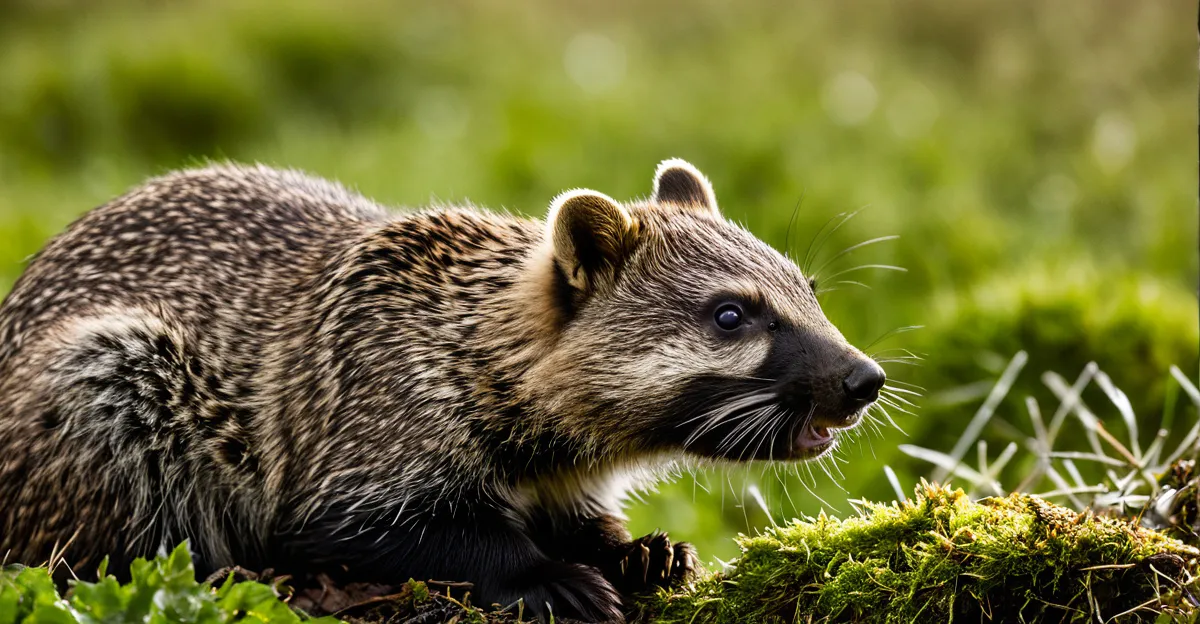Overview of Habitat Changes in the UK
Understanding habitat change in the UK involves recognizing the main drivers shaping local ecosystems. Urbanization remains a dominant force, expanding cities and infrastructure at the cost of natural areas. This growth often results in fragmentation of habitats, especially affecting woodlands and grasslands which are crucial for biodiversity. Agriculture also significantly contributes to environmental change. Intensive farming practices have altered soil structure, drained wetlands, and reduced plant diversity in many regions. These changes impact the overall health of UK ecosystems.
Climate change adds another layer of complexity. Shifting temperature and weather patterns affect coastal habitats and wetlands through rising sea levels and altered rainfall. Such transformations challenge the resilience of native species and the ecological functions of these areas.
Topic to read : What are the key challenges in protecting UK marine life?
Recent data illustrate that over the past few decades, there has been a notable decline in the extent and quality of certain UK ecosystems, particularly wetlands and grasslands. Woodland areas have seen some restoration efforts, but pressures from urban expansion persist. The combined effect of these drivers leads to dynamic but often detrimental habitat changes, emphasizing the importance of monitoring and managing these factors to preserve the UK’s natural heritage.
Evidence of Shifts in Wildlife Distribution
Shifts in wildlife distribution throughout the UK are increasingly documented, reflecting the effects of environmental changes, particularly habitat loss impact. Many species are altering their ranges, moving northward or to higher altitudes as they respond to changing conditions.
Also read : What Are the Surprising Habits of Common Animals in the UK?
For example, several butterfly species historically found in southern UK regions have expanded their range northwards over recent decades. This is often linked to warming temperatures and the loss of suitable habitat in their traditional zones. Similarly, certain bird populations have shifted their breeding grounds to more northerly locations or hillier terrain, aligning with changes in their preferred ecosystems.
Data sets compiled by conservation organizations highlight these trends in species distribution UK, showing measurable biodiversity shift UK patterns. Some mammals and plant species show clear evidence of relocating in response to fragmented habitats, which reduce their survival prospects in previously occupied areas.
Understanding these movements is crucial. It indicates not only the habitat loss impact but also changing climate influences. Detailed case studies demonstrate how protecting and restoring habitats can mitigate adverse effects, supporting species adaptation and biodiversity maintenance across the UK landscape.
Species-Specific Impacts and Notable Case Studies
Understanding how different UK wildlife species respond to environmental changes reveals the complex effects of habitat fragmentation and loss. For example, hedgehogs have sharply declined due to reduced garden connectivity and increased road traffic, highlighting urgent conservation needs. Their limited mobility means habitat fragmentation severely hampers their ability to access food and mates.
In contrast, some bird species illustrate varied responses. The red kite, once near extinction in the UK, has successfully adapted through targeted conservation efforts and supplementary feeding, showing resilience when human intervention supports population recovery. Meanwhile, nightingales have suffered from habitat loss in woodland areas, facing declines due to shrinking nesting sites and changing land use.
Amphibians like the common toad face challenges linked to wetland drainage and pollution, which directly affect breeding grounds. Pollinators, including bumblebees, are emerging as crucial indicators of ecosystem health but remain vulnerable to pesticide use and habitat degradation.
These case studies reveal emerging winners and losers within UK wildlife. Species with flexible habitat requirements or effective conservation support tend to adapt better, while specialist species experience declines. Recognizing these patterns aids in prioritizing conservation policies that address specific needs across species with varying conservation statuses in the UK.
Underlying Causes and Amplifying Factors
Understanding the decline in UK biodiversity requires examining habitat fragmentation, which isolates species populations and reduces genetic diversity. This fragmentation is often a direct result of land use change, particularly through agricultural intensification and urban expansion. Farms now favor large-scale monocultures with fewer natural corridors, limiting wildlife movement and breeding.
Climate change impact further intensifies these challenges. Shifting seasons disrupt species’ life cycles, while extreme weather events like floods or droughts damage delicate ecosystems. These rapid environmental shifts leave native species struggling to adapt, accelerating population declines.
Moreover, the interaction between habitat loss and invasive species in the UK creates a dangerous synergy. Invasive species often exploit disturbed habitats caused by land use changes, outcompeting native flora and fauna. Their presence alters ecosystem balance, undermining efforts to conserve biodiversity.
Together, these factors amplify one another, creating a complex web of threats. Climate change exacerbates habitat stress, while land use change provides openings for invasive species, compounding the pressure on native populations. Understanding these connections is essential to develop targeted conservation strategies that address not just individual threats, but their combined effects on UK wildlife.
Expert Insights and Conservation Perspectives
Leading UK ecologists emphasize that effective conservation strategies for species affected by habitat fragmentation must prioritize habitat restoration UK. This approach not only strengthens local ecosystems but also supports species movement and genetic flow, crucial for long-term survival.
Scientific opinion consistently highlights the importance of biodiversity management focused on creating connected habitats rather than isolated pockets. Recent government and NGO reports recommend green corridors and buffer zones as practical ways to mitigate distribution challenges faced by vulnerable species.
One widely discussed initiative involves restoring degraded lands to enhance natural regeneration. Experts agree that such efforts should be coupled with policy enforcement to prevent further habitat loss. Additionally, adaptive management techniques based on continuous monitoring are advocated to respond to environmental changes swiftly.
Conservationists also argue for integrating community involvement in restoration projects, boosting local awareness and participation. The synergy between robust scientific data and ground-level action offers a promising path to halt biodiversity decline effectively. These insights provide a foundation for emerging policies that aim to balance ecological needs with sustainable development goals in the UK.
Visualizing Change: Maps, Graphs, and Data
Enhancing understanding through clear presentation
Using wildlife maps UK offers an immediate visual representation of how species ranges shift over time. Species range maps and before-after habitat maps make it easier to grasp complex changes in distribution data at a glance. These maps, based on accurate habitat monitoring, reveal areas of habitat loss or expansion, highlighting regions where intervention is needed most.
Graphs play a crucial role in summarizing statistical trends. Population trends illustrated through time-series charts help track increases or declines, while bar graphs can compare distribution changes across different regions. Such visual tools condense vast datasets into accessible formats, facilitating clearer communication of conservation challenges and successes.
Importantly, this conservation data visualisation not only aids researchers but also informs policy makers. When authorities see concrete, easy-to-understand visuals derived from robust distribution data, it supports evidence-based decisions. Resource allocation for protecting critical habitats or targeting restoration efforts becomes more strategic and effective.
By integrating wildlife maps UK, habitat monitoring, and data visualisation, conservationists can better articulate progress and areas needing attention, driving more informed and timely conservation actions.



